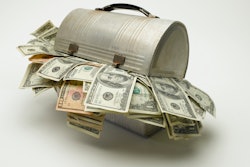
As the coronavirus pandemic wears on in the U.S., more Americans are adopting low-contact services aimed at obtaining essential goods and services while limiting the spread of the virus. Of the six conveniences Gallup has tracked, food pickup at restaurants (44%) and curbside pickup at stores (36%) remain atop the list of those used more often in recent weeks.
Both have seen double-digit increases between the first reading in late March/early April and mid-May. Restaurant takeout is up 18 percentage points, and store pickup has risen 17 points.
U.S. adults report similar increases in the use of virtual doctor visits (+15 points to 27%) and restaurant food delivery (+10 points to 23%) over the same period. Americans have been less likely to report greater reliance on home delivery of groceries or medical supplies, with both showing minimal growth since the initial measurement.
The latest data come from an online, probability-based Gallup Panel survey conducted May 11-17. Americans' usage of these services was previously tracked March 23 through April 19.
Younger, Higher Income Adults Gravitating Most Toward Convenience Shopping
Americans in all age groups have reported significant increases in the frequency with which they use four of the six convenience services, but those under the age of 45 are especially likely to say they are using them more often. These include picking up takeout restaurant food, using curbside pickup at a store, having a virtual doctor visit and ordering food for delivery from a restaurant.
Likewise, U.S. adults across income groups have significantly increased their usage of these same four low-contact services. Yet those in households with annual incomes of at least $90,000 are more likely than those with lower incomes to report using these services more often.
Bottom Line
With all states now easing restrictions on residents' public activities, fewer U.S. adults say they are isolating themselves, nearly half are going to grocery stores, and visits to restaurants have increased sharply. Still, many say they plan to exercise caution until a number of criteria are met. Given this, it is not yet clear how much longer Americans will take advantage of contactless services, or what effect this experience will have on their long-term use of these conveniences.
















